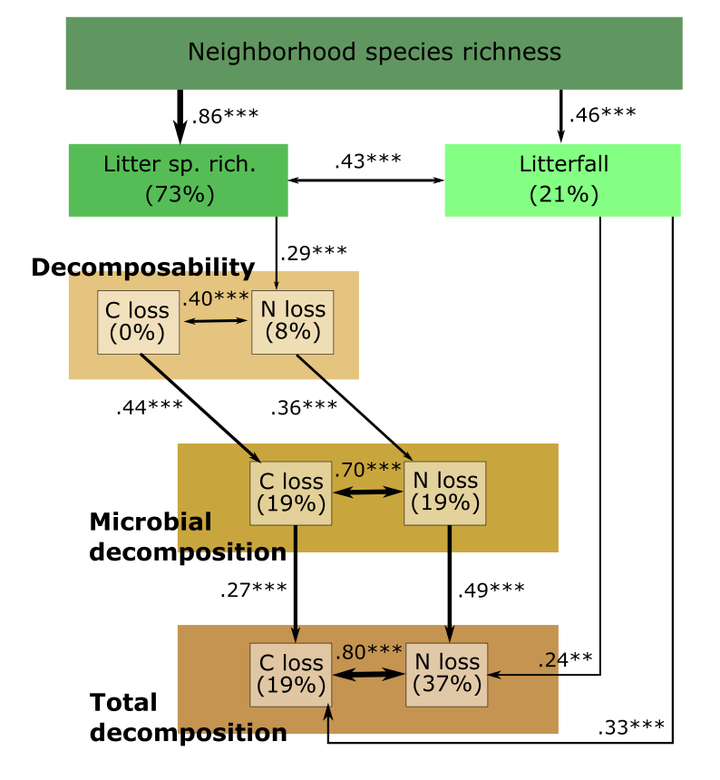
Abstract
Forest ecosystems are critical for carbon fixation in both above- and belowground compartments. Increasing tree diversity enhances forest productivity and litter decomposition processes. Litter decomposition is carried out by soil organisms; however, in subtropical forests where soil meso- and macrofauna abundances are rather low, we expected most of the litter decomposition process to be driven by microorganisms. In addition, there is evidence that litter diversity increases litter decomposability. However, how tree diversity affects decomposition by modulating the amount of litterfall and its composition, has not been tested yet. We studied tree diversity effects on decomposition as well as the role of soil microbes and litter decomposability in this process in a large-scale tree diversity experiment of subtropical China (BEF China). Moreover, we tested how leaf functional traits, tree biomass, and the forest spatial organization drive the amount of litterfall and litter composition. Our results show that tree species richness increased the amount of litterfall and litter species richness. We show that species-specific litterfall is driven by tree biomass and leaf functional traits (i.e., SLA, LDMC, carbon and nitrogen content) and decreases with increasing distance to the tree. The spatial distribution of the litterfall increases the spatial heterogeneity of litter distribution in the plot and thus influences litter decomposability and, thereby, microbial litter decomposition. We demonstrate that soil microorganisms are responsible for a large proportion of litter decomposition in this subtropical forest. These findings highlight the key role of tree diversity and cascading effects on different ecosystem properties in driving forest carbon and nitrogen cycles. The identified mechanisms can help to improve models on biogeochemical cycles.